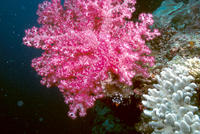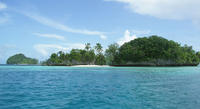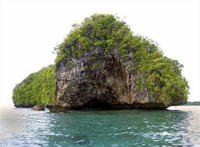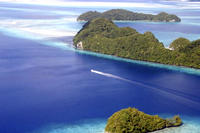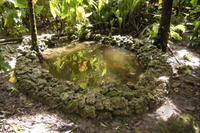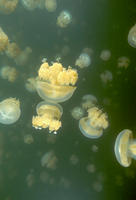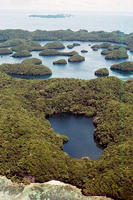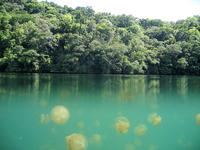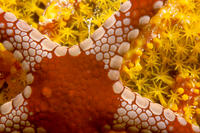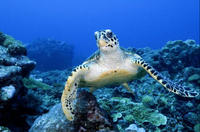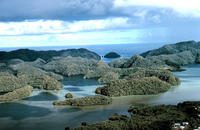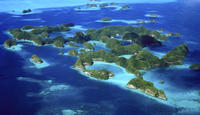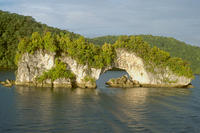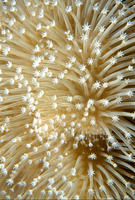You are in: Oceania -> Palau -> Rock Islands Souther... , and traditional search or Image Gallery will yield results of this site only
Rock Islands Southern Lagoon
| Site number: | 1386 |
|
| Type of site: | Mixed | |
| Date: | 17-18 centuries | |
| Date of Inscription: | 2012 | |
| Location: | Oceania, Palau | |
Up to 75 images are shown here. Click on each for more details or on Image Gallery for more images.
| Description: | Rock Islands Southern Lagoon covers 100,200 ha and includes 445 uninhabited limestone islands of volcanic origin. Many of them display unique mushroom-like shapes in turquoise lagoons surrounded by coral reefs. The aesthetic beauty of the site is heightened by a complex reef system featuring over 385 coral species and different types of habitat. They sustain a large diversity of plants, birds and marine life including dugong and at least thirteen shark species. The site harbours the highest concentration of marine lakes anywhere, isolated bodies of seawater separated from the ocean by land barriers. They are among the islands’ distinctive features and sustain high endemism of populations which continue to yield new species discoveries. The remains of stonework villages, as well as burial sites and rock art, bear testimony to the organization of small island communities over some three millennia. The abandonment of the villages in the 17th and 18th centuries illustrates the consequences of climate change, population growth and subsistence behaviour on a society living in a marginal marine environment. --WHMNet's description is from WHC Site, where additional information is available. | |
| The Rock Islands of Palau, also called Chelbacheb, are a small collection of limestone or coral uprises, ancient relics of coral reefs that violently surfaced to form Islands in Palau's Southern Lagoon, between Koror and Peleliu, and are now an incorporated part of Koror State. There are between 250 to 300 islands in the group according to different sources, with an aggregate area of 47 square kilometres (18 sq mi) and a height up to 207 metres (679 ft). The islands are for the most part uninhabited and are famous for their beaches, blue lagoons and the peculiar umbrella-like shapes of many of the islands themselves. The Rock Islands and the surrounding reefs make up Palau's popular tourist sites such as Blue Corner, Blue hole, German Channel, Ngermeaus Island and the famed Jellyfish Lake, one of the many Marine lakes in the Rock Islands that provides home and safety for several kinds of stingless jellyfish found only in Palau. Many of the islands' display a mushroom-like shape with a smaller base at the intertidal notch than what lies above it. The indentation comes from erosion and from the the dense community of sponges, bivalves, chitons, snails, urchins and others that graze mostly on algae. --Wikipedia. Text is available under the Creative Commons Attribution-ShareAlike License. | ||
| Source: | http://whc.unesco.org/en/list/1386 | |
| Reference: | 1. UNESCO World Heritage Center (http://whc.unesco.org/en/list/1386). 2. Wikipedia. | |


